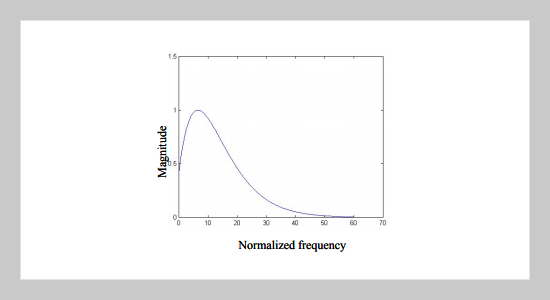REFERENCES
- [1] Barni, M., Bartolini, F. and Piva, A., “Improved wavelet-based watermarking through pixel- wise masking,” Image Processing, IEEE Trans., Vol. 10, pp. 783-791 (2001).
- [2] Blahut, R. E., Theory and Practice of Error Control Codes, Reading, Addison-Wesley (1983).
- [3] Bors, A. G. and Pitas, I., “Image watermarking using DCT domain constraints,” Proc. of Int. Conf. on Image Processing, Vol. 3, pp. 231-234 (1996).
- [4] Chitprasert, B., Rao, K. R., “Human visual weighted progressive image transmission,” Communications, IEEE Trans., Vol. 38, pp. 1040-1044 (1990).
- [5] Clark, C. C. and Cain, J. B., Error Correcting Coding for Digital Communication, Plenum (1981).
- [6] Cox, I. J., Kilian, J., Leighton, T. and Shamoon, T., “Secure spread spectrum watermarking for multimedia,” Image Processing, IEEE Trans., Vol. 6, pp. 1673- 1687 (1997).
- [7] Cox, I. J., Kilian, J., Leighton, T. and Shamoon, T., “Secure spread spectrum for multimedia,” Image Processing 97, IEEE Trans., Vol. I, pp. 548-551(1997).
- [8] Haykin, S., Communication Systems 3/e, John Wiley & Sons, U. S. A. (1994).
- [9] Hsieh, C. T., Lu, Y. L., Luo, C. P. and Kuo, F. J., “A study of enhancing the robustness of watermark,” Proc. IEEE Int. Sym. on Multimedia Software Engineering, Taiwan, pp. 325-327 (2000).
- [10] Hsu, C. T. and Wu, J. L., ”Multiresolution watermarking for digital images,” Circuits and Systems II: Analog and Digital Signal Processing, IEEE Trans., Vol. 45, pp. 1097-1101 (1998).
- [11] Kim, Y. S., Kwon, O. H. and Park, R. H., “Wavelet based watermarking method for digital images using the human visual system,” Proc. IEEE Int. Sym. on ISCAS '99, Orlando, FL, U. S. A., Vol. 4, pp. 80-83 (1999).
- [12] Kuo, C. J. and Chen, M. S., “A new signal encryption technique and its attack study, Proc. Int. Conf. on Security Technology,” Taipei, Taiwan, pp. 149-153 (1991).
- [13] Lee, I., Kim, J., Kim, Y., Kim, S., Park, G. and Park, K. T., “Wavelet transform image coding using human visual system,” Proc. IEEE Circuits and Systems, Taiwan, pp. 619-623 (1994).
- [14] Lee, J, Won, C. S., “Authentication and correction of digital watermarking images,” Electronics Letters, Vol. 35, pp. 886-887 (1999).
- [15] Lin, S. and Costello, D. J., Error Control Coding, Prentice Hall (1983).
- [16] Lu, Y. L., “Static image security with low human visual respond characteristic & multi-frequency wavelet watermark,” Master Thesis, University of Tamkang, Taiwan, R. O. C. (2001).
- [17] Luo, C. P., “A study of the robustness of watermark,” Master Thesis, University of Tamkang, Taiwan, R. O. C. (2001).
- [18] Mannos, J. L. and Sakrison, D. J., “The effect of a visual fidelity criterion on the encoding of images,” IEEE Information Theory, Vol. IT-20, pp. 525-536 (1974).
- [19] Michelson, A. M. and Levesque, A. H., Error-Control Techniques for Digital Communication, Wiley, U. S. A. (1985).
- [20] Niu, X. M., Lu, Z. M. and Sun, S. H., “Digital image watermarking based on multiresolution decomposition,” Electronics Letters, Vol. 36, pp. 1108-1110 (2000).
- [21] Peterson, W. W. and Weldom, E. J., Error- Correcting Codes, M.I.T. Press, Cambridge, M.A., U. S. A. (1972).
- [22] Petitcolas, F. A. P., Anderson, R. J. and Kuhn, M. G., “Attacks on copyright marking systems,” Proc. Int. on Information Hiding, Portland, Oregon, U. S. A., pp. 219-239 (1998).
- [23] Piva, A., Barni, M., Bartolini, F. and Cappellini, V., “DCT-based watermark recovering without resorting to the uncorrupted original image,” Proc. Int. Conf. on Image Processing, Vol. 1, pp. 520-523 (1997).
- [24] Wei, Z. H., Qin, P. and Fu, Y. Q., “Perceptual digital watermark of images using wavelet transform,” Consumer Electronics, IEEE Trans., Vol. 44, pp. 1267-1272 (1998).
- [25] Xia, X. G., Boncelet, C. G. and Arce, G. R., “A multiresolution watermark for digital images,” Proc. Int. Conf. on Image Processing 97, Santa Barbara, CA, U. S. A. Vol. I, pp. 548-551, (1997).
















